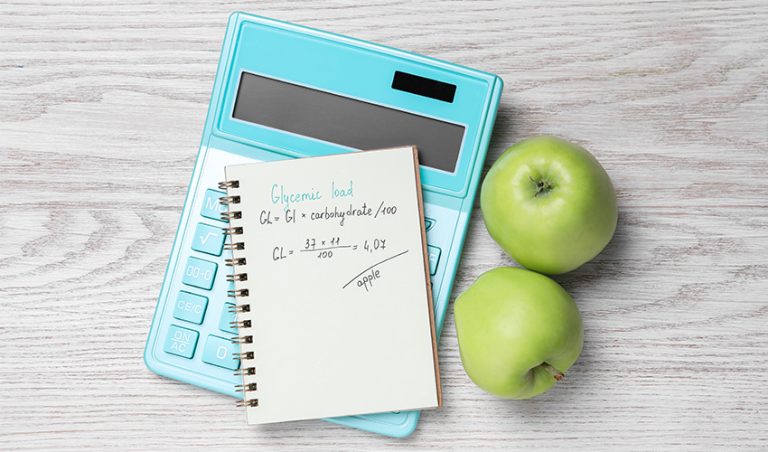
If you have diabetes, you are likely aware of the importance of monitoring your carbohydrate intake. However, different foods have different effects on blood sugar levels, as assessed by the glycemic index (GI) and glycemic load (GL). But what do these numbers indicate? The glycemic index of foods indicates the speed at which a carbohydrate containing food increases blood sugar levels, whereas the glycemic load of foods measures both the rate and amount of carbohydrates in a serving. This makes GL a more useful tool for diabetes management, as it helps you in selecting foods that regulate blood sugar levels.
Do you have a friend or family member who is suffering from diabetes? Or maybe you’re pre-diabetic and looking to make changes in your lifestyle to get back on the right track. Regardless, when it comes to managing diabetes, one of the key things to know more about is the glycemic load. If you’re unsure of what is the importance of glycemic load in diabetes, here’s handy guide to help you out.
Since diabetes is a disease related to the levels of blood sugar, it is important to keep an eye on this metric for effective management. Normally, management of diabetes involves the glycemic index, a scale that assigns a numeric score to food on the basis of how much it can make your blood sugar levels rise. So, the lower a food’s glycemic index is, the slower it takes for your blood sugar levels to rise and vice versa. However, the glycemic index paints only a partial picture.
To get a complete idea of what your blood sugar looks like after you consume a food, you also must consider its glycemic load. Glycemic load can be arrived at by multiplying the glycemic index of a food with the amount of carbohydrates it carries. 2 Glycemic load tells you a food item’s total effect on blood sugar, including how fast it causes glucose to enter your bloodstream and how much glucose per serving it delivers. An example that illustrates the difference between the two markers is watermelon. While watermelon has a relatively high glycemic index, it has very little carbohydrate content which means that its glycemic load is only 5.
Try the Nutrition Calculator to get detailed insight on your daily meal
To understand how to calculate glycemic load, you can refer to the formula and example given below:
Say, you want to know the glycemic load of a slice of bread, the calculations would be as follows:
If you do the math, you’ll find that the glycemic load of a slice of bread is around 8.1.
Consuming high-GI foods causes higher and faster spikes in blood sugar levels than eating low-GI foods. This increase in blood sugar levels (hyperglycemia) stimulates pancreatic β-cells to secrete more insulin to manage the excess blood sugar. This results in hyperinsulinemia, a condition in which large amounts of insulin circulate in the bloodstream. In the following hours, the rise in insulin level in the blood (hyperinsulinemia) caused by high-GI food consumption may result in a significant reduction in blood sugar levels (hypoglycemia).
Consuming low-GI meals, on the other hand, causes blood glucose levels to rise slowly and steadily. This reduces strain on the β-cells of the pancreas that produce insulin and prevents excessive insulin spikes. Individuals who choose low-GI foods can keep more stable blood sugar levels and minimise their risk of insulin-related disorders, making it an important strategy for diabetes management and overall metabolic health. Health supplements like Prohance D vanilla powder 400 gm can help you manage your condition relatively easily.
Consult Now & get personalized guidance to improve your health and wellbeing
If you’re interested in adopting a low-glycemic diet, then here are some tips you can follow.
While understanding what is glycemic index, what is glycemic load, and how to calculate glycemic index and glycemic load are useful for blood sugar management, but they have limitations as well.
Food is typically consumed in combinations. Combining foods changes the GI value because each food in your meal has a distinct GI level. Cooking or changing the food structure additionally impacts the GI value.
Focussing simply on GI content may prevent you from making the healthiest meal choices because not all high-GI foods are unhealthy, and not all low-GI foods are unhealthy. For instance, fat content can lower the value of GI, making foods like chips and ice cream appear appealing on paper but not necessarily the healthiest option.
Another issue is that GI and GL do not accurately account for portion sizes accurately. High-GI foods eaten in small amounts may have a smaller effect than low-GI foods consumed in larger amounts. Furthermore, individual responses to foods differ depending on aspects such as metabolism, exercise level, and sensitivity to insulin.
If you’re looking to manage your blood sugar levels, especially if you have diabetes, then Prohance D – protein powder for diabetics is what you’ve been looking for. Prohance D is full of slow-releasing carbohydrate – Isomaltulose that gets absorbed by the body slowly to prevent the rise of postprandial hyperglycemia (PPHG). Additionally, the fibres in Prohance D create a layer in the stomach to prevent absorption of cholesterol and help with weight loss. Crafted using evidence-based scientific formula, Prohance D can help you effectively manage your diabetes.
